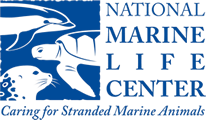What is Metabolic Bone Disease (MBD)

Reptiles require sunlight to truly flourish. Most reptile species do not absorb Vitamin D very well, so exposure to ultraviolet light is needed for reptiles to manufacture their own Vitamin D. This is something very important to keep in mind because Vitamin D (especially D3, the active form of Vitamin D) is vital to calcium metabolism. A lack of Vitamin D can result in metabolic bone disease (MBD), also known as secondary nutritional hyperparathyroidism or osteoporosis. While MBD is not a calcium deficiency, the main cause of the disease is the inability to correctly metabolize calcium (an improper calcium/phosphorous ratio can also be a primary cause of the disease).
Metabolic bone disease can result in some very severe symptoms. When calcium levels are very low, the reptile’s body will try to compensate by cannibalizing it’s own resources – in this case, the bones. With such low calcium levels, the bones become soft and susceptible to damage. With turtles, this also extends to the shell and can lead to deformities that may later cripple the turtle. A turtle’s unique physiology (the fact that it’s ribs and spine are fused to the shell) means that as the shell deforms, it is in the perfect position to pinch, restrict or otherwise damage the spine.

In addition, calcium plays an important part in muscle contraction. Muscle contraction is regulated by the level of calcium ions in the cytoplasm.
Upon entering the cytoplasm, the calcium ions binds to troponin causing it to change shape. This moves the tropomyosin off of the actin-myosin binding sites. From there ATP binds to a portion of the myosin (the “heads”) and causes it to change conformation, resulting in a contraction. Basically, the calcium is what allows the two muscle filaments to bind together. Add in some energy in the form of ATP and now the muscles can contract. However, this means that without calcium, muscles cannot contract… including the heart.
This is only the start of the health problems MBD can cause.

Unfortunately, this disease is not rare, especially in cases of improper husbandry where the animals are not provided with proper lighting. Recently, during the red bellied-cooter round up, five turtles came to our facility with a fairly advanced case of MBD. They are currently undergoing treatment, but it is highly unlikely that they will all recover enough to be releasable. Unfortunately, Ringo, who had the most advanced case of the disease did not survive. This article is in memorial to him.
Sources:
Acierno, M., Mitchell, M., Roundtree, M., and Zachariah, T. Effects of ultraviolet radiation on 25-hydroxyvitamin D3 synthesis in red-eared slider turtles (Trachemys scripta elegans). AJVR, Vol 67, No. 12, December 2006.
Bluvias, Jessie E. and Karen L. Eckert. 2010. Marine Turtle Trauma Response Pro-cedures: A Husbandry Manual. Wider Caribbean Sea Turtle Conservation Network (WIDECAST) Technical Report No. 10. Ballwin, Missouri. 100 pp.
Jacobson, E.R., What is a healthy reptile? Washington State University 2011. http://campusvet.wsu.edu/infofac/healthyreptiles.htm
Common Turtle Illnesses website.
http://www.personal.psu.edu/pjg5127/IST250/illnesses.htm#MBD
Posted by Dimitria G.
Dimitria is a Summer, 2013 Intern at the National Marine Life Center. She is a sophomore at U Mass Dartmouth majoring in Biology.
